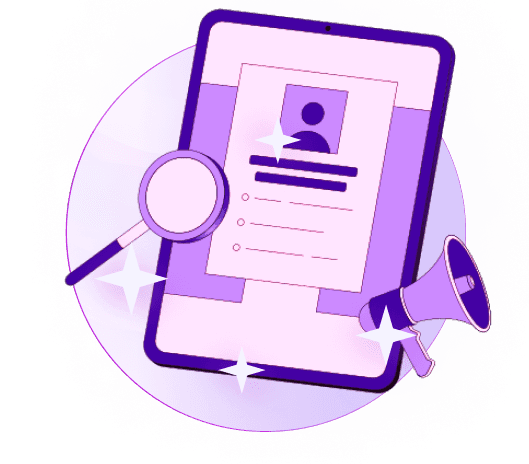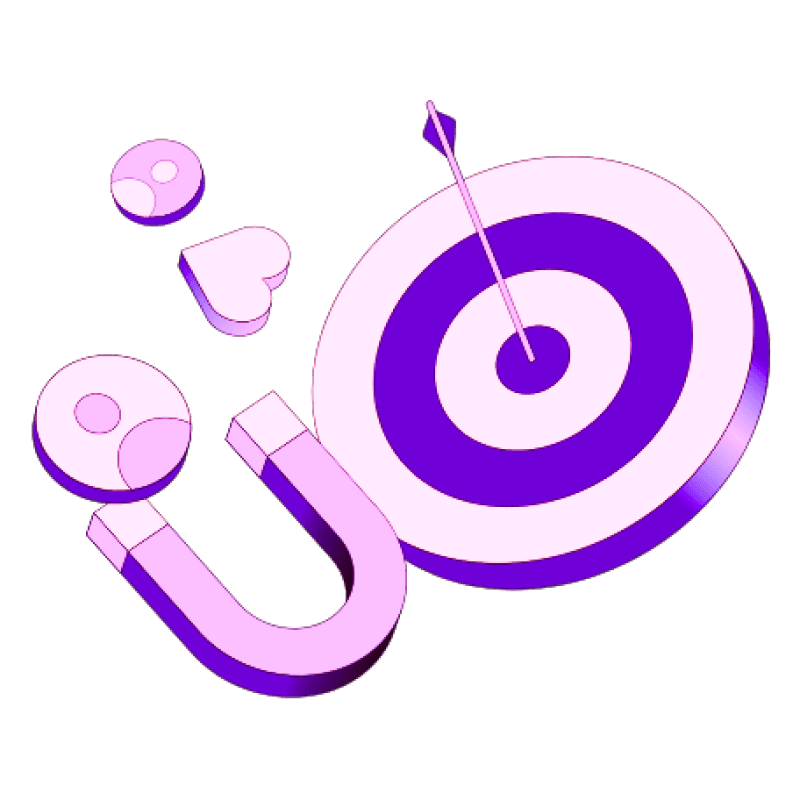Blogs
Articles

CRM Integration Waterfall Enrichment: Boost Data Accuracy & Workflow
Did you know that 30% of your B2B contact data decays annually?
CRM integration waterfall enrichment provides a solid answer to this ongoing challenge. Traditional single-source data enrichment only reaches about 60% coverage. But waterfall enrichment bumps your data coverage up to 85-95%. Companies that enrich their CRM data the right way get 44% more Sales Qualified Leads than those who skip this step.
Let's explore how CRM integration waterfall enrichment works, why it matters to your business, and the best ways to put this approach to work. Let's tuck in!
What is CRM Waterfall Enrichment?
Waterfall enrichment is a sophisticated way to enhance CRM data by using multiple data sources in a sequential flow. The name "waterfall" perfectly describes how data flows through various providers. The system moves to the next provider automatically when one source can't fill a specific data gap. This continues until the information is complete or all designated sources have been checked.
How Waterfall Enrichment Works?

The step-by-step enrichment process sends contact or company information through several data vendors. Each vendor tries to add missing details like email addresses, phone numbers, job titles, and company information.
The system connects with external data providers that collect information from:
Public records and government databases
Professional networks like LinkedIn
Company websites and directories
Proprietary datasets and technology databases
First-party sales and marketing data
This layered approach produces substantially better results than traditional single-source enrichment. Single-source enrichment typically provides valid information for only 30-60% of prospect lists. On top of that, it saves money and time because you pay only when the vendor finds the right data.
Why CRM integration is essential for enrichment?
CRM integration builds the foundation that makes waterfall enrichment possible. Companies that lack proper integration lose critical information and face operational inefficiencies and missed revenue opportunities.
Industry research shows that the average business has integrated only 28% of its applications. About 81% of IT leaders say data silos hold back their digital transformation efforts. CRM integration allows waterfall enrichment to work by:
Breaking down data silos so everyone uses the same information
Automating data synchronization between systems
Reducing manual data entry that causes errors
Creating a central customer data hub that extends the CRM's functionality
Enabling live updates across all connected platforms
The process can happen automatically when your CRM connects with enrichment tools through APIs or direct connections. It works in real-time as new leads enter your system or in scheduled batches to refresh large sets of records.
This integration ended up turning scattered, incomplete customer data into a unified, accurate resource. It equips sales, marketing, and customer service teams to deliver customized experiences based on reliable information.
How Waterfall Enrichment Works in CRM Systems?
Let's discover how waterfall enrichment completes your data step by step in your CRM ecosystem.
Step-by-step flow of waterfall enrichment
Your data completion follows a smart sequence that gets the best coverage:
Original Assessment: The system spots records that need "gate attributes" (critical fields like email, phone number, job title)
Primary Provider: Your CRM sends what data it has to the first vendor to fill gaps
Field Mapping: The system takes the new data and puts it in the right CRM fields
Cascade Effect: Any remaining gaps move to the second provider
Completion Cycle: This goes on until fields are complete or all vendors have tried
The results speak for themselves. Standard enrichment only matches 50-60% of records. Waterfall enrichment pushes this to 80-90% or higher. Some companies even hit 93% email match rates, which makes everything run smoother.
Real-time vs batch enrichment
Your CRM gives you two ways to handle waterfall enrichment:
Real-time enrichment updates your records the moment they change or enter the system. This works best in quick sales processes where every minute counts—especially when you have customer-facing teams that need instant access. You'll need reliable systems, but your team always has the latest data.
Batch enrichment handles many records at set times—usually monthly, quarterly, or during big database updates. This budget-friendly option works well for longer sales cycles or regular data cleanup when you need to watch your computing resources or API usage.
CRM integration with NetSuite and Salesforce
NetSuite and Salesforce both connect smoothly with waterfall enrichment:
Salesforce integration runs automatic updates through its API framework. You can link enriched fields to routing logic and start updates when records change. Sales reps save about 20 hours each month by cutting out manual data entry.
NetSuite integration works through its business management toolkit. Companies set up automatic updates to NetSuite records from outside sources. This keeps customer data in sync across marketing, sales, and financial systems.
Top Tools for CRM Data Enrichment in 2025
Sales teams depend on specialized platforms to get the most out of their CRM waterfall enrichment. Here are three outstanding tools you should consider for 2025.
Persana – Best for custom waterfall logic
Persana distinguishes itself with a unique waterfall enrichment approach that connects to over 75 data providers. The platform shines through its waterfall configuration control which helps you create custom data flows by selecting enrichment providers and their sequence. Their PersanaVector™ Technology employs semantic intent recognition rather than simple keyword matching and achieves 76% higher relevance scores compared to traditional search methods.
Persana's AI agent Nia handles up to 90% of sales development tasks. Teams report saving 8-10 hours of prospecting work each week with Persana.
Clearbit – Best for firmographic depth
Clearbit, now part of HubSpot, delivers 100+ B2B attributes gathered from 250+ data sources. The platform stands out with its continuous data refresh system that updates records automatically when changes occur. This immediate enrichment approach provides vital context for every lead, contact, and account. You can create precise lead scoring and routing without requesting too much information from prospects.
ZoomInfo – Best for ABM and personalization
ZoomInfo sets the enterprise standard for B2B contact and company intelligence with its extensive database of 14+ million companies and 235+ million contacts. The platform's intent data capabilities help you spot companies that actively research solutions similar to yours. ZoomInfo's IP address intelligence identifies companies behind website visits, even anonymous ones. This feature proves valuable for account-based marketing strategies that target large organizations.
Want to implement waterfall enrichment in your CRM? Check out how Persana's waterfall enrichment tools can improve your data accuracy and workflow efficiency.
Best Practices to Maximize Workflow Efficiency
Your CRM integration waterfall enrichment value depends on implementing mutually beneficial alliances and workflows. Here are proven techniques that create simplified processes.
Enrich at the point of capture
GTM velocity drops when data enrichment waits until after CRM sync. Lead qualification and routing become instant when enrichment triggers fire as soon as forms are submitted. This simple change turns enrichment from a basic maintenance task into a powerful revenue accelerator.
Map enriched fields to routing logic
Raw enrichment data provides little value without action triggers. Your firmographic data (revenue, industry, employee count) should connect directly to workflows like routing logic and lead scoring models. Pipeline movement speeds up and manual triage reduces naturally.
Avoid overwriting good data
Quality information needs protection from enrichment cycles through clear rules. Your data integrity improves with transformation rules that standardize formats and create source hierarchies.
Use fallback logic for incomplete records
No provider guarantees 100% match rates. Smart contingency paths help manage low-confidence matches. Country-based routing works when company size data is missing. Triage queues handle cases without email matches.
Check out Persana's custom waterfall logic tools that build reliable fallback systems.
Track motion, not just match rate
Business outcomes matter more than technical metrics to measure enrichment success. Lead-to-meeting time, rep response rates, and routing accuracy tell the real story. This perspective positions enrichment as a GTM enabler rather than a data task.
Conclusion
CRM integration waterfall enrichment has become a breakthrough approach for businesses dealing with data decay and incomplete records. This advanced technique reshapes the scene of customer information management by flowing through multiple providers to find the most accurate data. Our findings show that traditional single-source enrichment falls short of the 85-95% coverage that waterfall enrichment provides.
Data quality has a direct effect on sales performance. Sales teams lose a full day each week because of poor data quality. Waterfall enrichment cuts this waste and boosts lead quality at the same time. Your team will work with the most complete information possible through up-to-the-minute updates or scheduled batch processing.
The right practices will make a huge difference in successful implementation. Data enrichment at the capture point speeds up your market reach. Field mapping to routing logic creates useful outcomes instead of just collecting data. The proper tools can boost your results dramatically - whether it's Persana's custom waterfall logic, Clearbit's firmographic depth, or ZoomInfo's ABM capabilities.
Key Takeaways
CRM integration waterfall enrichment transforms incomplete customer data into a strategic asset by leveraging multiple data sources sequentially, achieving 85-95% data coverage compared to traditional single-source methods that only reach 60%.
• Waterfall enrichment cascades through multiple data providers sequentially, filling gaps when one source fails, achieving 80-90% match rates versus 50-60% from single sources.
• Real-time enrichment at point of capture accelerates sales velocity by instantly qualifying and routing leads, reducing manual triage and speeding pipeline movement.
• Map enriched data directly to routing logic and lead scoring to transform enrichment from a hygiene task into a revenue acceleration lever that drives actionable outcomes.
• Implement fallback logic for incomplete records with contingency paths and priority hierarchies to maintain data integrity while maximizing coverage across all prospects.
• Track business outcomes over technical metrics by measuring lead-to-meeting time, response rates, and routing accuracy rather than just match rates to prove ROI.

Create Your Free Persana Account Today
Join 5000+ GTM leaders who are using Persana for their outbound needs.
How Persana increases your sales results
One of the most effective ways to ensure sales cycle consistency is by using AI-driven automation. A solution like Persana, and its AI SDR - Nia, helps you streamline significant parts of your sales process, including prospecting, outreach personalization, and follow-up.



